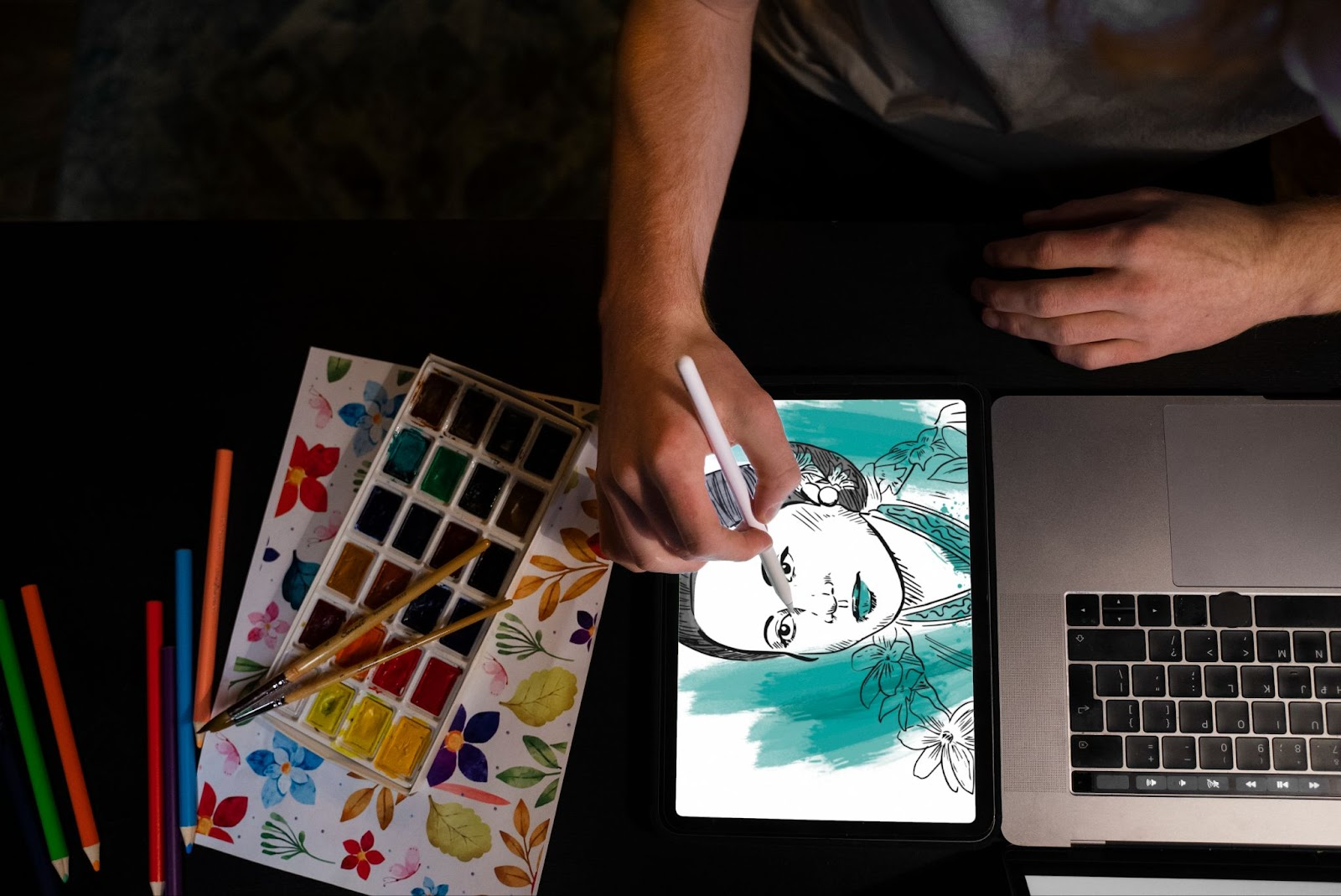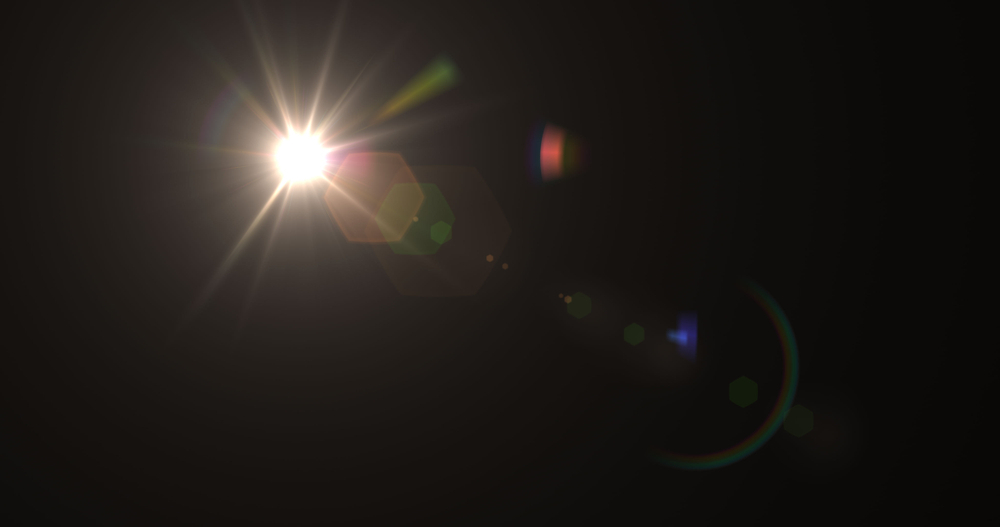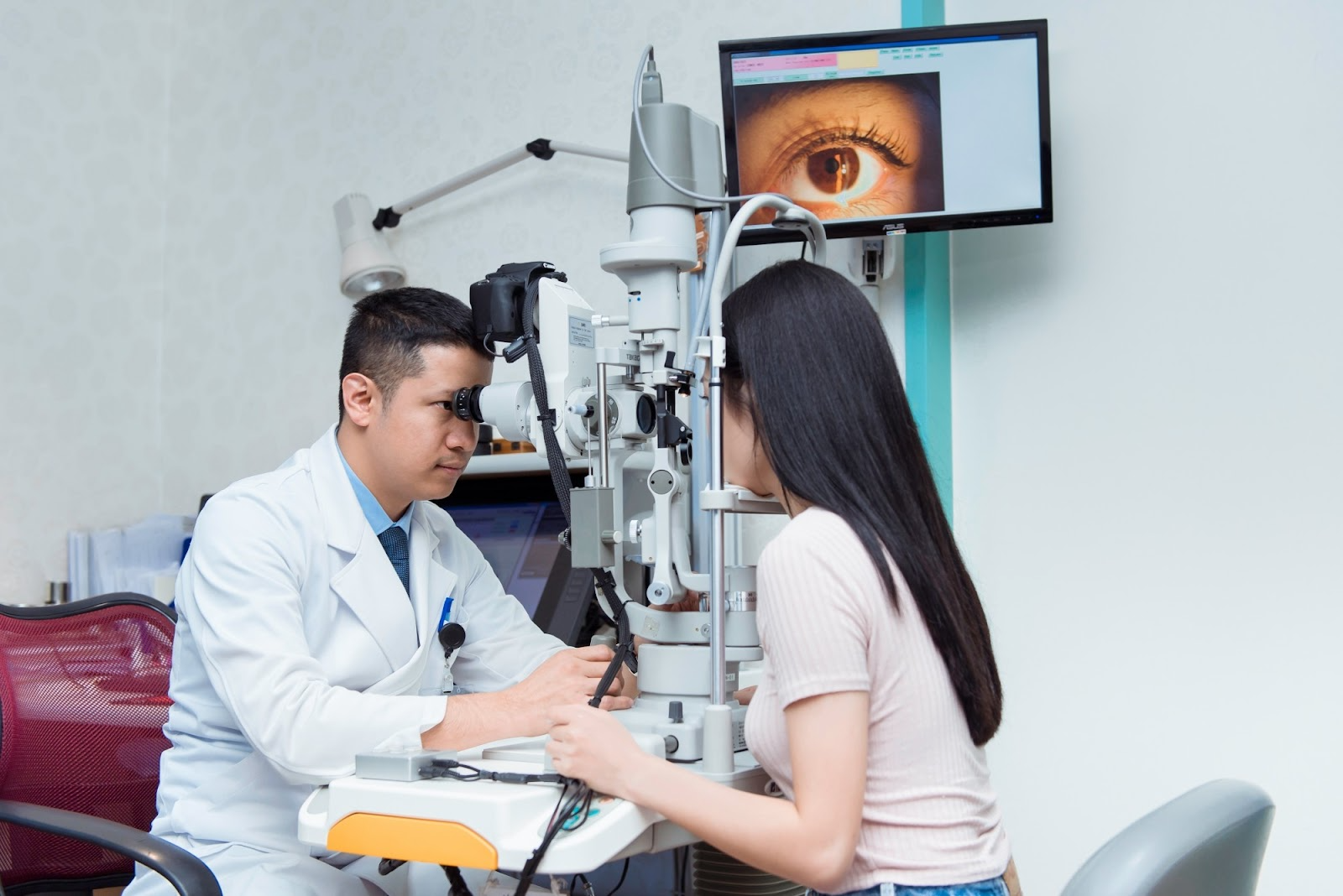SHOULD PEOPLE IN THE DESIGN INDUSTRY HAVE REFRACTIVE SURGERY?
Many people working in the design industry in general (graphics, fashion, architecture, ...) have a desire to have refractive surgery to get rid of the inconveniences that glasses and contact lenses bring. However, their jobs are required to work with electronic devices, so they are often confused before deciding to have refractive surgery. They are afraid of complications that may affect their work (reduced color sensation, difficult to see details, ...). Are these complications possible and how to fix them? Find out with the Japan International Eye Hospital through the article below!

Why do people in the design industry hesitate before deciding to have surgery?
For those who pursue design, eyes and hands are important parts that directly affect work. Therefore, every impact, even the smallest, is carefully considered by them. Myopia surgery is an important decision and they inevitably worry about possible abnormalities after surgery whether it will affect the long-term vision quality of the eyes or not.
Some concerns about nearsightedness of people working in the design industry can be mentioned as:
- Hard to see details.
- Reduced perception of color (tone, tint, intensity).
- More sensitive to light.
- Eye fatigue when looking at for a long time.
- Nearsightedness due to frequent need to look at the electronic drawing board.

Complications of nearsightedness affect the design work correctly or not?
Difficulty looking at details?
In fact, surgery will help the eyes see details more clearly and realistically when wearing glasses, because there is no longer an obstacle that is glasses or contact lenses in front of the eyes. At the same time, getting scratched or dirty glasses can also make the patient see objects out of shape and more blurred.
Immediately after refractive surgery, near vision may not be immediately sharp because natural accommodation takes time to recover. A small number of patients reported a feeling of fog after ReLEx SMILE surgery. The reason is that after SMILE surgery, the space left in the cornea after parenchymal core removal will need time to heal completely, during this time the eye will feel slightly foggy. However, these are short-term phenomena, most of which improve after 1 week to 1 month (depending on the patient's location) and do not affect vision in the long term.

Reduced perception of color (tone, tint, intensity)?
Myopia surgery does not affect the patient's ability to perceive color at all. Current surgical methods only affect the surface of the cornea - the outermost part of the eye (for laser surgery) or do not affect the corneal structure (for Phakic surgery). The part that helps perceive color is the cone cell of the retina - the innermost part of the eye.
According to statistics, almost all patients who undergo nearsightedness surgery do not report a decrease in color perception in the eyes. However, in the first time when the cornea has not fully recovered, the patient may see slightly blurred images, leading to the color not being clear, so it is often assumed that myopia surgery causes the eyes to decrease the ability to perceive. color. This is a normal phenomenon and will go away after a few weeks depending on the location of each patient.

More sensitive to light?
After myopia surgery, patients may feel glare or see halos when looking directly at light sources such as light bulbs, flashlights, etc. This is also a normal phenomenon and will go away after a few weeks depending on myopia. depending on the location of each patient. The sensitivity to light will not last long and affect the patient's vision when it is necessary to perform design operations on electronic boards.

Tired of looking at for a long time?
Many people believe that after myopia surgery, the eyes will be weaker and more prone to eye fatigue, affecting work and daily activities. However, in fact, the cause of eyestrain is due to the eyes having to adjust a lot when looking closely for a long time such as reading for too long, driving a long distance, looking at a computer screen or other devices for a long time. electronic, not surgical. Therefore, to overcome eye fatigue, patients need to give their eyes a break after every 20 minutes of work so that the eyes can relax, release regulation, and combine the use of artificial tears to provide moisture. for eyes, reducing eye fatigue caused by dry eyes.

Recurrent due to often working with electronic drawing board?
For those who work in the design industry, nearsightedness is the biggest worry when the eyes have to constantly look up close to manipulate on computers and electronic drawing boards. In fact, the risk of re-appearance is very low:
- It only accounts for a very small percentage and the patient can be completely controlled through the use of scientific eyes after surgery:Apply the 20-20-20 rule: Every 20 minutes of work, look 20 feet (~6m) away for 20 seconds.
- Get enough sleep 7-8 hours a day.
- Do not work or use electronic devices in the dark.
- Add foods that are good for your eyes: Lutein, Zeaxanthin, Vitamin A, Vitamin C, Omega 3,...
- Periodic check-ups as prescribed by the doctor.

So should people working in the design industry have surgery?
Myopia surgery will not affect the patient's design work, even helping them see the small details in the design and be more comfortable in daily activities. Therefore, those working in the design industry can safely operate near-sightedness without worrying about long-term complications on the eyes.

Before surgery for myopia, the patient needs to have an in-depth eye exam to determine if the eye meets the requirements for surgery. Some of the popular refractive error treatment methods that people in the design industry can refer to are Phakic, ReLEx SMILE, Femtosecond Lasik, SBK Lasik. Patients can refer to the free eye exam package (Wednesday & Saturday) and modern - safe - fast recovery methods of surgery at the Japan International Eye Hospital right here.
